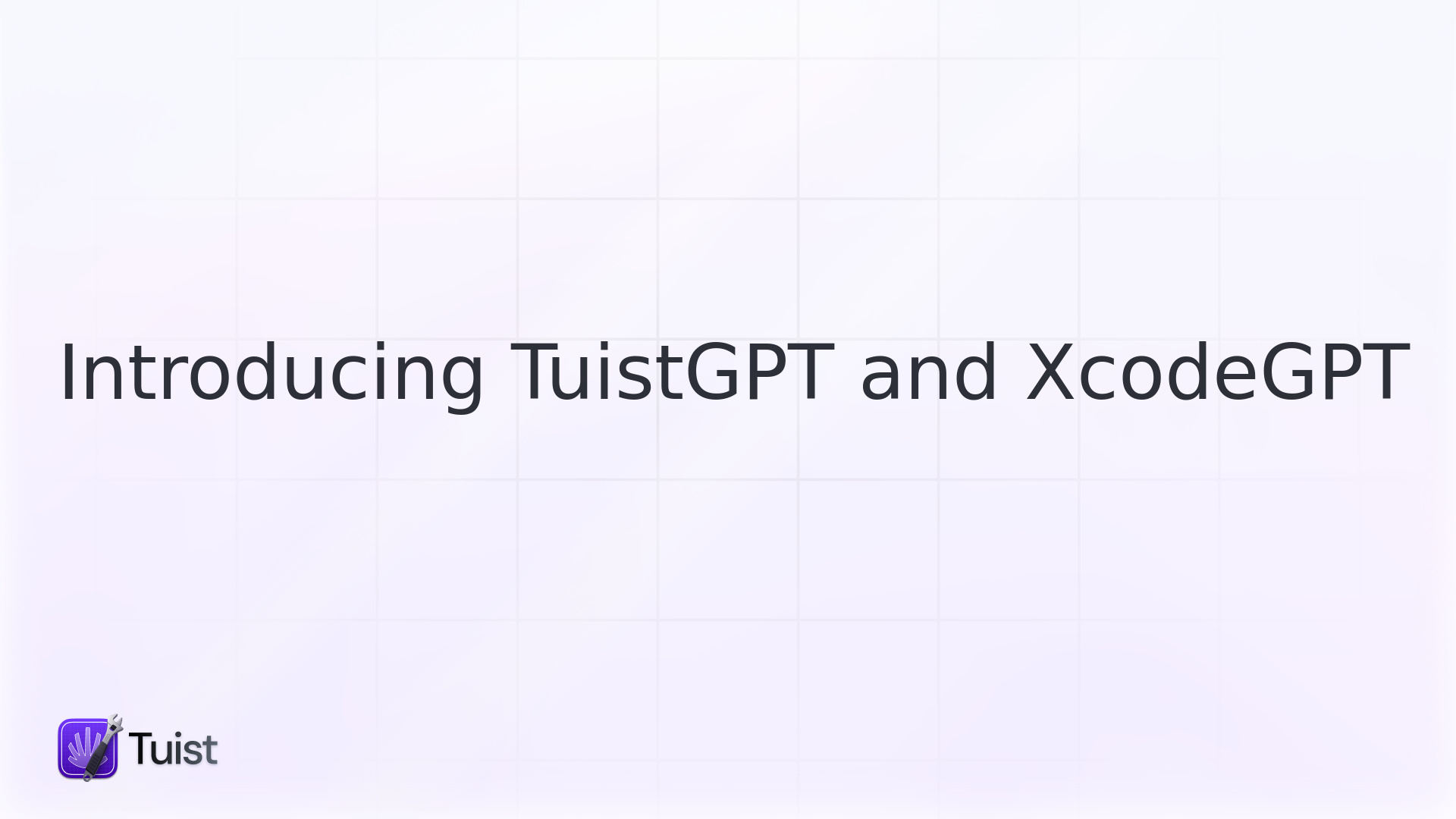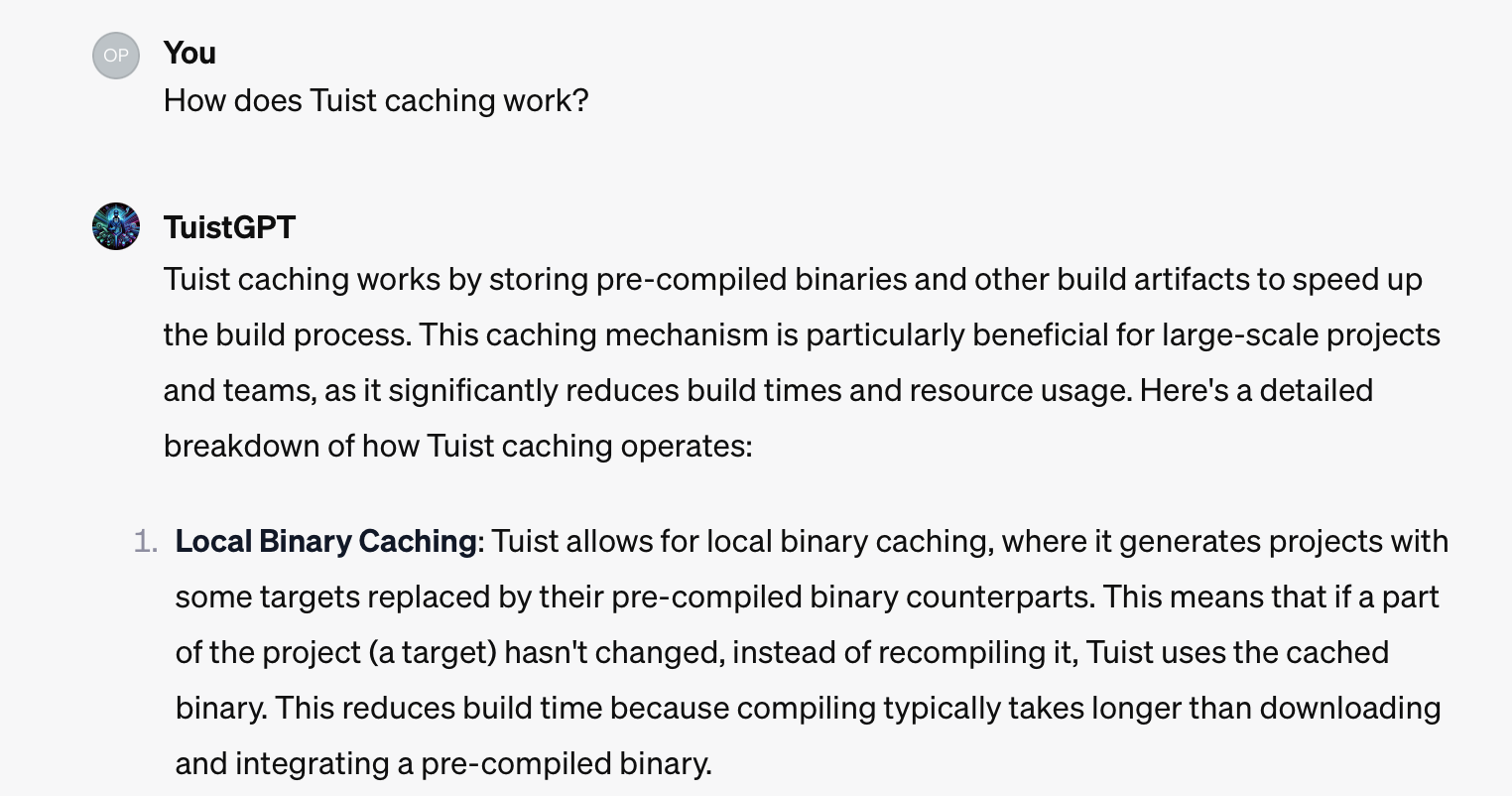

Throughout our journey in developing Tuist, we have accumulated extensive knowledge about the intricacies of Xcode and its project structures. This expertise was hard-earned, requiring thorough exploration of XcodeProj's inner workings, delving into various codebases, and crafting Xcode projects that encompass a wide range of complex dependency graphs. We have endeavored to share this wealth of information through blog posts and Tuist's comprehensive documentation. Despite our efforts to optimize these resources for search engine discoverability, accessing this information remained a challenge.
Recently, however, OpenAI's groundbreaking advancements offer a promising solution to this issue. They have unveiled the concept of specialized GPTs – intelligent assistants tailored to specific domains. Excitingly, we have harnessed this technology to create XcodeGPT and TuistGPT, tools specifically designed for the Xcode and Tuist communities.
XcodeGPT
XcodeGPT is your go-to assistant for any queries about Xcode, its build systems, and project management. This model is not only trained with publicly available Xcode data but also infused with the nuanced understanding we have developed over the years. We are committed to continually updating XcodeGPT with our latest insights, ensuring it remains an invaluable resource for the most current Xcode information.
Experience XcodeGPT in action here.
Tuist GPT
Designed with both beginners and experienced users in mind, TuistGPT is your expert guide to all things related to Tuist. It's enriched with Tuist’s detailed documentation and internal resources, enabling it to offer in-depth knowledge about the project.

Experience TuistGPT in action here.
Closing words
The emergence of large language models is reshaping our interaction with technology in profound ways. We are thrilled to be at the forefront of this technological revolution. Working with Xcode or understanding Tuist can be daunting, but with the advent of GPTs, these challenges are becoming a thing of the past. We are excited to empower our community with these advanced tools, making the experience more accessible and less intimidating.
Looking ahead, we are exploring ways to integrate these GPTs directly into our documentation. This will not only streamline access to vital information but also create a more interactive and responsive user experience. Stay tuned as we continue to innovate and bring these cutting-edge AI integrations to our documentation, further enhancing your journey with Tuist and Xcode.

